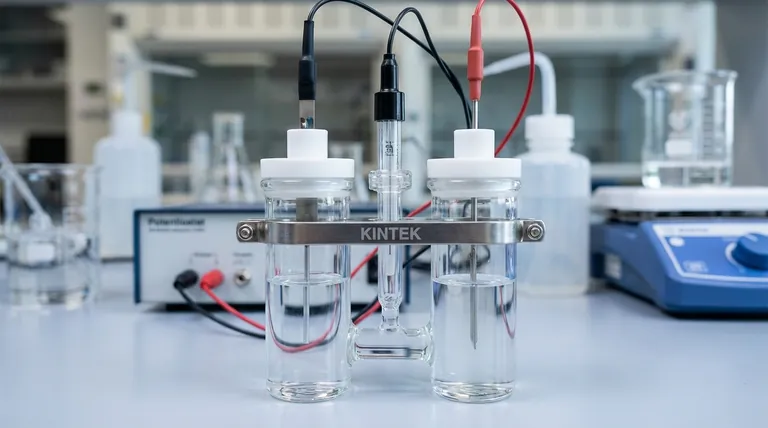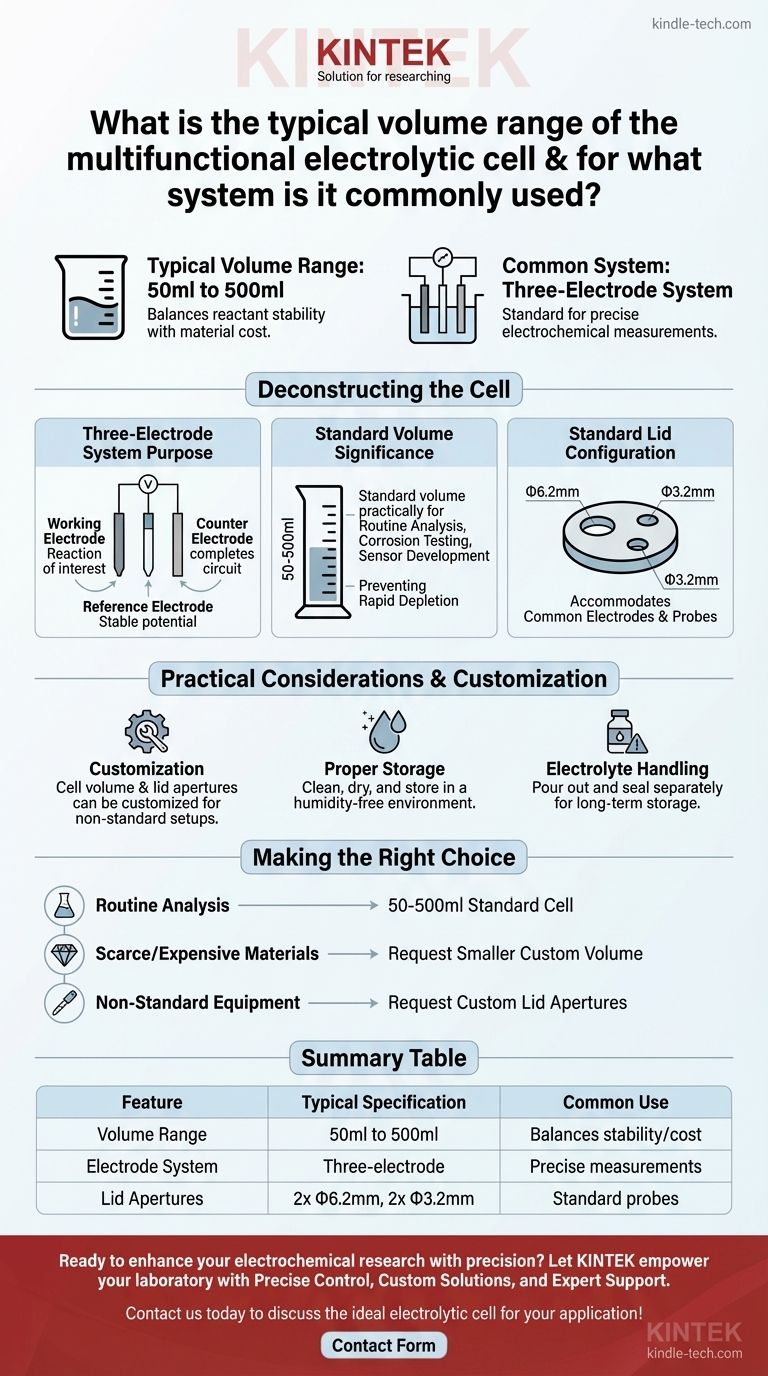On average, the standard multifunctional electrolytic cell has a volume ranging from 50ml to 500ml. This piece of equipment is a cornerstone of electrochemical research and is most commonly used for experiments involving a three-electrode system.
The multifunctional electrolytic cell is designed to be a versatile and standardized vessel for precise electrochemical analysis. Its typical volume range accommodates common lab-scale experiments, while its design is optimized for the three-electrode setup, the standard for most electrochemical measurements.

Deconstructing the Multifunctional Electrolytic Cell
The Purpose of a Three-Electrode System
A three-electrode system is the standard for modern electrochemistry because it allows for precise control and measurement. It consists of a working electrode (where the reaction of interest occurs), a reference electrode (which provides a stable potential), and a counter electrode (which completes the circuit).
This setup isolates the potential at the working electrode from the overall cell voltage, ensuring that measurements are accurate and reproducible.
Standard Volume and Its Significance
The common volume range of 50ml to 500ml strikes a critical balance for laboratory work. It is large enough to prevent rapid depletion of reactants and to ensure stable measurements, yet small enough to be practical with often expensive electrolytes and materials.
This range is suitable for a wide array of applications, from fundamental research to quality control testing.
Standard Lid Configuration
The cell lid is crucial for holding the electrodes in a stable, repeatable position.
A standard configuration often includes two apertures of Φ6.2mm and two of Φ3.2mm. These sizes are designed to accommodate common commercially available electrodes, gas inlets, or other probes.
Practical Considerations and Customization
The Need for Customization
While the standard specifications cover most use cases, electrochemical research is highly varied.
For this reason, both the cell volume and the lid aperture specifications can typically be customized upon request. This allows researchers to adapt the cell for non-standard electrodes, larger-scale reactions, or unique experimental designs.
Proper Storage to Ensure Accuracy
The integrity of your experiment depends on the cleanliness of your equipment. After use, the electrodes and reaction container must be completely dry before storage.
Store the cell in a humidity-free environment to prevent contamination that could interfere with sensitive electrochemical signals.
Handling the Electrolyte
If the cell is being stored long-term, the electrolyte should never be left inside.
It must be poured out and kept in a separate, sealed container to prevent degradation of the cell components and the electrolyte itself.
Making the Right Choice for Your Experiment
Choosing the correct cell configuration is the first step toward reliable data.
- If your primary focus is routine analysis: The standard 50ml to 500ml cell is the ideal choice for applications like cyclic voltammetry, corrosion testing, or sensor development.
- If you are working with scarce or expensive materials: Requesting a smaller custom volume can significantly reduce material consumption and experimental costs.
- If your experiment involves non-standard equipment: Ensure you request custom lid apertures to match the specific dimensions of your unique electrodes or probes.
Selecting the appropriate tool ensures your electrochemical measurements are both precise and meaningful.
Summary Table:
| Feature | Typical Specification | Common Use |
|---|---|---|
| Volume Range | 50ml to 500ml | Balances reactant stability with material cost |
| Electrode System | Three-electrode setup | Standard for precise electrochemical measurements |
| Lid Apertures | Two Φ6.2mm, two Φ3.2mm | Accommodates standard electrodes and probes |
Ready to enhance your electrochemical research with precision?
At KINTEK, we specialize in providing high-quality lab equipment, including customizable multifunctional electrolytic cells. Whether you need a standard 50ml-500ml cell or a custom configuration for unique electrodes, our solutions are designed to ensure your experiments are accurate and reproducible.
Let KINTEK empower your laboratory:
- Precise Control: Achieve reliable data with equipment optimized for three-electrode systems.
- Custom Solutions: Tailor cell volume and lid apertures to your specific research needs.
- Expert Support: Benefit from our deep understanding of laboratory consumables and equipment.
Contact us today to discuss the ideal electrolytic cell for your application!
Visual Guide

Related Products
- H Type Electrolytic Cell Triple Electrochemical Cell
- Customizable PEM Electrolysis Cells for Diverse Research Applications
- H-Type Double-Layer Optical Electrolytic Electrochemical Cell with Water Bath
- Double-Layer Water Bath Electrolytic Electrochemical Cell
- Electrolytic Electrochemical Cell Gas Diffusion Liquid Flow Reaction Cell
People Also Ask
- What is the overall structure of the H-type double-layer optical water bath electrolytic cell? Precision Design for Controlled Experiments
- What preparation steps are needed before starting an experiment with an H-type electrolytic cell? A Guide to Safe and Accurate Results
- How should failures or malfunctions of an H-type electrolytic cell be handled? A Guide to Safe and Effective Troubleshooting
- What is the function of an H-type exchangeable membrane electrolytic cell? Master Precise Reaction Control
- What are the specifications of the openings on the electrolytic cell? A Guide to Port Sizes and Configurations



















